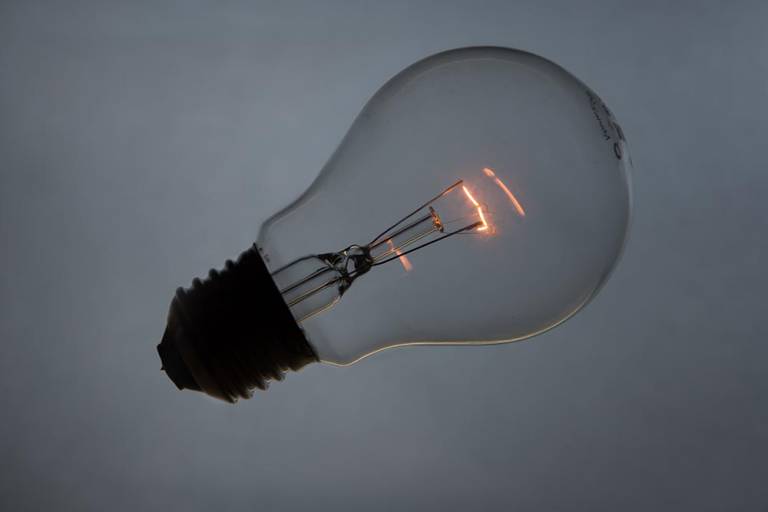What exactly are brainwaves? Why are they important, and how can we influence them? That’s what we’re going to discuss in this post.
What Are Brainwaves?
Brainwaves are electrical impulses in our brain. [1] They represent the spectrum of consciousness – from slow to fast, from loud to subtle, from functional to complex.
Brainwaves are produced electrical pulses when neurons communicate with each other. They occur at different frequencies. We measure them in cycles per second or hertz (Hz).
Scientists detect brainwaves by using special sensors on our scalp. By measuring brainwaves, scientists can understand our moods, emotions, and behaviors.
For example, if brainwaves are slow (delta and theta brain waves), we are tired, slow, and dreamy. Faster brain waves (alpha, beta, and gamma) are associated with alertness, focus, attention, and activity.
Delta brainwaves (1-3 Hz)
 Delta brainwaves are slow and loud brainwaves. They have a low frequency that penetrates deeply. We generate them during deep meditation or sleep. We know that deep sleep is very restorative and vital to the healing process. That is why delta brainwaves are associated with regeneration.
Delta brainwaves are slow and loud brainwaves. They have a low frequency that penetrates deeply. We generate them during deep meditation or sleep. We know that deep sleep is very restorative and vital to the healing process. That is why delta brainwaves are associated with regeneration.
Subjective feeling states: Dreamless sleep, trance, unconscious
Our behaviors: Not moving
By training, we can learn to increase delta brainwaves in our brain.
Theta brainwaves (3-8 Hz)
 Theta brainwaves are slow but slightly faster than delta brainwaves. They occur during deep meditation and sleep, especially when we dream. Experts associate theta brainwaves with vivid imagery and information beyond our awareness. We are inefficient during theta brainwaves.
Theta brainwaves are slow but slightly faster than delta brainwaves. They occur during deep meditation and sleep, especially when we dream. Experts associate theta brainwaves with vivid imagery and information beyond our awareness. We are inefficient during theta brainwaves.
Subjective feeling states: Creative, intuitive, dreamlike, switching between thoughts
We can learn to suppress theta brainwaves to increase our attention or to enhance them to become more relaxed.
Alpha brainwaves (8-12 Hz)
 Alpha brainwaves are dominant when we are present. That’s why they occur during the early meditation stage. They are also dominant during relaxation. They aid calmness, alertness, learning, and mental coordination.
Alpha brainwaves are dominant when we are present. That’s why they occur during the early meditation stage. They are also dominant during relaxation. They aid calmness, alertness, learning, and mental coordination.
Subjective feeling states: Relaxed, tranquil, present
By training, we can learn how to become more relaxed and present.
Beta brainwaves (13-38 Hz)
 Beta brainwaves are dominant when we are focused. They are faster brainwaves present when cognitively active, during decision making, problem-solving, and judgment. They represent the state of alertness. Three subtypes of beta brainwaves more specifically define our mental activities. People who are continually highly-alert consume a lot of energy. This can lead to burnout.
Beta brainwaves are dominant when we are focused. They are faster brainwaves present when cognitively active, during decision making, problem-solving, and judgment. They represent the state of alertness. Three subtypes of beta brainwaves more specifically define our mental activities. People who are continually highly-alert consume a lot of energy. This can lead to burnout.
Subjective feeling states: Focused, thinking, self-aware, alert
Effects of training are shown in increased alertness.
Gamma brainwaves (38-42 Hz)

Gamma brainwaves are the fastest and smallest brainwaves. They are dominant during peak performance. When we are highly focused but our mind is quiet, we can access this alert state.
Scientists speculate that the presence of gamma relates to expanded consciousness. Gamma brainwaves are also associated with the flow. When we are in flow, we are fully engaged in the activity.
Subject feeling states: thinking, brainstorming, fully emerged in the activity, flow state
Brainwaves And Cognitive Disabilities
Even though we separated between different brainwaves, we also have all of them constantly active in different parts of our brain. However, a higher degree of each brainwave type increases when we increase our focus, when we get tired or fall asleep.
For example, when we are in the flow, there are many gamma brainwaves present. When we are anxious, the amount of beta brainwaves increases. During daydreaming, we have a higher amount of theta brainwaves.
People with ADD/ADHD, Tourette’s syndrome, epilepsy, fibromyalgia, chronic fatigue, or learning disabilities have more slow brainwaves present. From the research standpoint, people with ADD are fascinating. During regular brain activity, all their brain regions seem to work well. However, when they try to focus, their prefrontal cortex starts shutting down. The harder they try, the worse they get.
People with the mentioned cognitive disabilities have trouble sustaining attention, learning, reading, and controlling mood. They can be hyperactive, lazy, or absent. To influence their brainwaves, they need first to optimize their brain activity. In most cases, they can do that by increasing the amount of dopamine.
Can We Change Brainwaves?
Sadly, we are not aware of the brainwaves, so changing them is more complicated than it seems. But we can influence them with proper training. [2] Neurofeedback (or Neurotherapy) is a type of biofeedback that uses real-time brain activity data to learn how to control brain function. Based on the current research, we know how to retrain our brains.
Meditation and yoga help us train our brainwaves into balance. Highly experienced meditators seem to control brainwaves through voluntary thought control. They also have different resting-state brainwaves. [3]
We also alter our brain function with the use of medications and drugs.
Why Should We Learn To Change Brainwaves Activity?
Neurofeedback practitioners find that the immediate feedback on brain states produces changes in our behavior. Those changes are reflected in brainwaves. By influencing brainwaves, we can speed up learning, relaxation, and even recovery. If we learn to impact brainwaves, we have much bigger control over our cognition and brain health. It will also help us stay mentally sharp.
So, my final suggestion is to start regularly meditating because this can bring a ton of benefits to you. If you can afford neurofeedback sessions or gadgets, even better!
Verdict
Is your brain performing the way it is supposed to? Or could you have more brain power for optimal performance?
Check our brain assessment to find it out!






